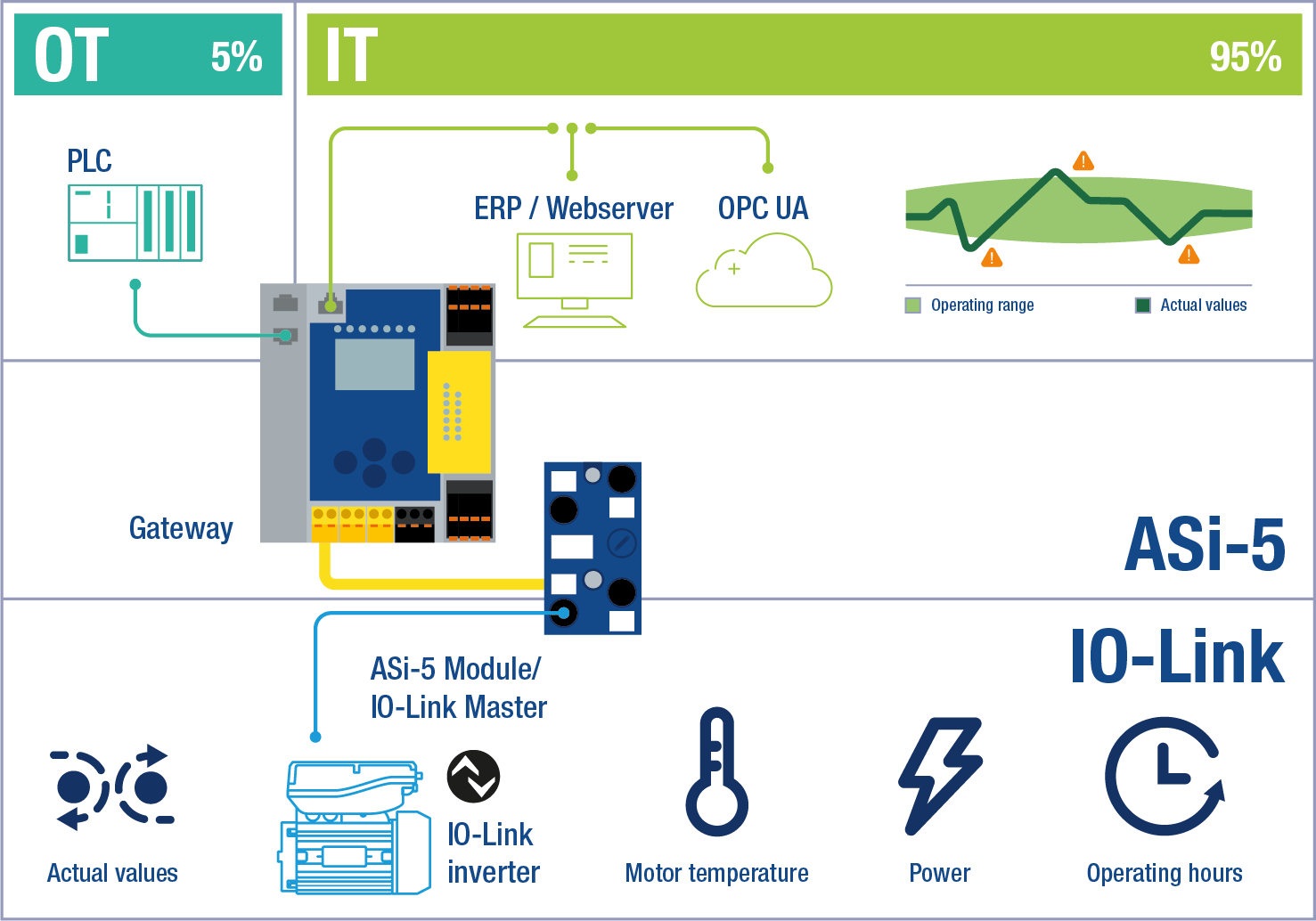What is IO-Link?
IO-Link is a fieldbus-independent interface that ensures seamless communication down to the "last meter" at the field level. With IO-Link, sensors and actuators can be connected to the control system level via a cost-efficient, point-to-point connection on a standard, unshielded three-conductor cable. Being an open interface, IO-Link can be integrated into all common fieldbus and automation systems.
The international IO-Link standard (IEC 61131-9) enables central fault diagnosisand localization down to the actuator/sensor level. Further information, such as parameters or diagnostic messages, are exchanged in addition to process values. IO-Link devices can even be adapted to the respective production requirements via the control system during operation.
Advantages of IO-Link
IO-Link is an internationally standardized, manufacturer-independent interface. The open standard (IEC 61131-9) is compatible with all common fieldbuses when implemented with a gateway.

Reduced Machine-related Costs
A cost-efficient standard cable establishes a connection up to 20 meters long between the IO-Link master and IO-Link device. The variety of interfaces is significantly reduced, as well as development and assembly costs. Interoperability also ensures a high level of investment protection.

Efficient
Operation
IO-Link devices can be positioned directly on the machine since they do not have to be accessible for parameterization. Parameter sets can be quickly changed via the IO-Link interface under different production conditions during operation, e.g. for switching thresholds or sensitivity.

Demand-oriented
Maintenance
Continuous diagnostic data of the entire process can prolong maintenance intervals since systems and machines need to be maintained much less frequently, e.g. by means of automatic readjustment via IO-Link. Predictive maintenance is also possible. This is because the diagnostic data is transparently transported to the control system and to the Cloud via OPC UA.
With modern Edge Gateways from Bihl+Wiedemann, valuable diagnostic data (e.g., motor temperature) can be separated from the process data yet at the field level - and conveniently transferred to IT via OPC/UA. IT thus has independent access to the diagnostic data. It can therefore link existing analysis tools with modern IO-Link devices - in parallel with PLC programming. In order to minimize the wear of the inverter or motor, logical links from, for example, increasing power and exceeding the temperature limits could lead to the motor being operated at reduced speed or cooling pauses.
IO-Link mit Bihl+Wiedemann: Easy, flexible & cost-effective
Bihl+Wiedemann offers a well thought-out concept for the integration of IO-Link. You benefit from freedom of topology, reduced wiring complexity without switches and a smart power supply concept. Further advantages include reduced IP management complexity and low-cost IO-Link masters, which we provide with 1, 2, 4, and 8 ports.
Main Cost Comparison Save up to 40 % on 50 Devices
In many application scenarios, IO-Link solutions from Bihl+Wiedemann are much more cost-effective than similar solutions from other providers. An application with Bihl+Wiedemann is already cheaper than comparable PROFINET variants from three 4-port IO-Link masters. Reduce costs by connecting digital I/Os directly.


